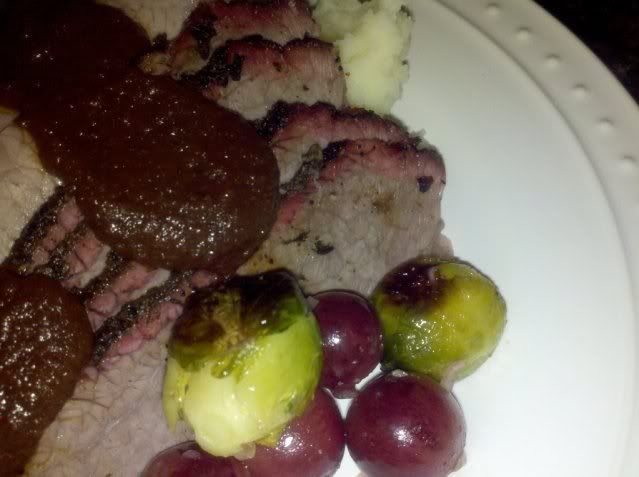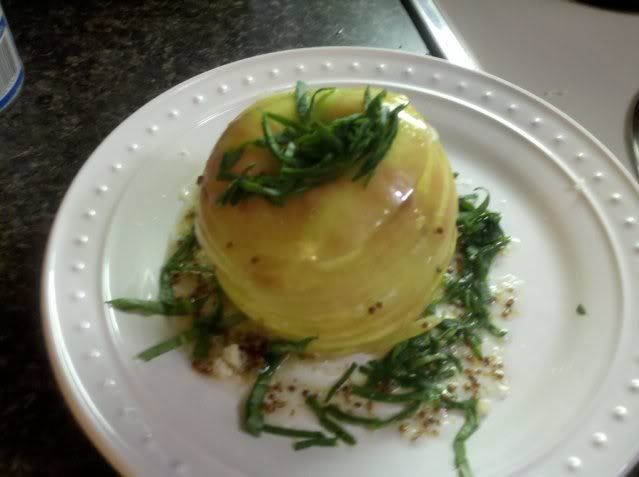<BLOCKQUOTE class="ip-ubbcode-quote"><div class="ip-ubbcode-quote-title">quote:</div><div class="ip-ubbcode-quote-content">the post you copied in is the exact reason why I pretty much only come to this forum. It sounds like people think their way or opinion is the only one. </div></BLOCKQUOTE>
Hear, hear. It's a
snotty response - and I mean that in its full childish connotation.
I'm wondering, with Josh, what does 'firm' brisket mean - like, not falling apart? Well, yes, then. I ain't cookin' pot roast. That's what I'm looking for. And achieve. Which is the same as when I used to low/slow them.
I say just go for it. Learning happens by doing.
Last night's kettle-cooked, HH brisket. (I served it on homemade hand-cut noodles cooked with cabbage and onions.)

Tonight, leftovers, on garlic mashed, with roasted Brussels sprouts, red grapes and shallot. The sauce was the same as last night, one made from dried sour cherries, dried baby pineapple, a bit of tomato, etc.

Opened tonight with a salad of whole, cored sliced Honeycrisp apple, each slice interlayered with a smidge of Vermont extra-sharp cheddar, with spinach chiffonade and a maple-pear vinegar-almond oil vinaigrette.




